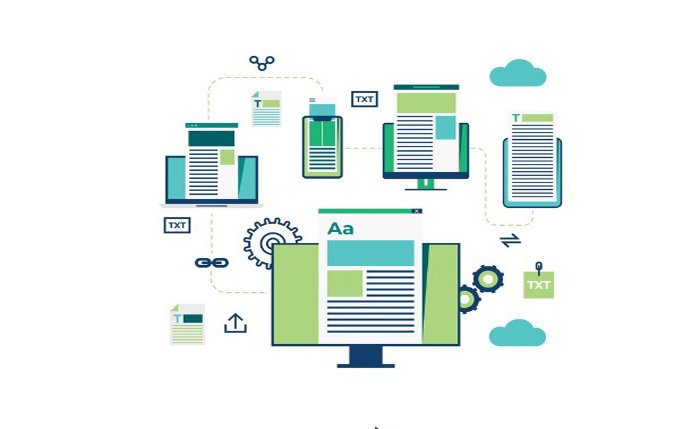
Customizing Your WordPress Website’s Footer
Introduction
Footers play a pivotal role in web design, often overlooked yet crucial for providing visitors with easy access to important information, navigation, and functionality. Serving as the anchor of a website, a well-designed footer can enhance user experience, reinforce brand identity, and improve site navigation. In the realm of WordPress, customization of the footer area opens up vast possibilities for website owners, enabling them to tailor this essential component to meet their specific needs and objectives. This discussion focuses on leveraging WordPress platforms, particularly through the use of the Site Editor and footer block patterns, to customize and innovate footer designs effectively.
First Approach: Utilize the Site Editor for Footer Customization
The Site Editor in WordPress is a comprehensive tool that introduces a new era of site-wide customization capabilities, including the often-overlooked footer area. This editor is part of WordPress’s Full Site Editing (FSE) project, aiming to provide users with a more intuitive and visual approach to designing and managing their websites.
Overview of the Site Editor tool in WordPress
The Site Editor allows users to directly manipulate the layout and elements of their entire website from a single interface, including headers, footers, and everything in between. It represents a significant step forward in WordPress’s evolution, offering a more unified and user-friendly experience for site customization. Through the Site Editor, users can access templates and template parts, which are reusable design elements that can be applied across various pages of a site, thereby ensuring consistency and efficiency in design.
Step-by-step guide to customizing the footer using the Site Editor
Customizing the footer using the Site Editor involves a few straightforward steps. First, navigate to the Site Editor from your WordPress dashboard and select the template or template part that corresponds to the footer. Within this environment, you can add, remove, or modify blocks to create a footer that aligns with your site’s design and functional requirements. This might include adding navigation menus, social media links, contact information, or custom widgets. The direct manipulation and live preview functionalities of the Site Editor make it easier to experiment with different layouts and designs until you achieve the desired outcome.
Incorporating Footer Block Patterns for Enhanced Design
Block patterns offer another layer of design flexibility, providing pre-designed block layouts that can be easily inserted and customized within your pages or template parts, including the footer.
Explanation of footer block patterns
Footer block patterns are collections of blocks arranged in specific layouts designed to be used in website footers. These patterns can include various elements such as text, lists, links, and images, pre-configured to serve common footer needs. By utilizing these patterns, WordPress users can quickly implement sophisticated designs without starting from scratch, ensuring a professional and cohesive look.
How to access and apply block patterns for innovative designs
Accessing and applying footer block patterns in WordPress is a simple process. Within the Site Editor, navigate to the footer area of your template or template part. Click on the ‘+’ button to add a new block and then select the ‘Patterns’ tab to explore available block patterns. From there, you can choose from a variety of footer patterns. Once inserted, each element of the pattern can be customized further to match your site’s branding and design requirements, allowing for a high degree of personalization while saving time and effort in the design process. This method streamlines the creation of visually appealing and functional footers, enhancing the overall user experience of your WordPress site.
Tailoring Unique Footers for Various Web Pages
The Importance of Having Different Footers for Different Pages
Footers on a website often serve as the final piece of communication a visitor encounters before leaving the site. They are not merely structural elements but can significantly enhance user experience, provide valuable information, and reinforce brand identity. Tailoring unique footers for different pages acknowledges that visitors on various parts of your site might have different informational needs or interests. For instance, a footer on a blog page might include a newsletter sign-up form, while a product page footer might highlight customer support or warranty information. Customizing footers based on page content or visitor intent can create a more cohesive and user-friendly website experience, encouraging longer visits and deeper engagement.
Tips for Creating and Managing Multiple Footer Designs
Creating and managing multiple footer designs requires a thoughtful approach to ensure consistency with the overall site design while also allowing for the unique elements of each footer to shine. Start by identifying the key elements that all footers should contain, such as copyright information, social media links, or a site map. Then, consider the specific needs of different site sections and how the footer can address those. Tools and plugins that allow for conditional logic or the assignment of different footer templates to specific pages can simplify the management process. Organizing footers in a way that they can be easily updated and maintained is crucial, especially for sites with content that changes frequently.

Alternative Approach: Leveraging Widgets for Footer Modification
Introduction to Widgets in WordPress Footer Customization
Widgets are a powerful and flexible tool in WordPress, allowing users to add content and features to their site’s footer without needing to code. WordPress widgets can be used to display dynamic content, such as recent posts, custom menus, text, images, and more, directly in the footer area. This functionality enables site owners to enhance their footers with useful information and interactive elements easily. The drag-and-drop interface in the WordPress Customizer or Widgets area simplifies the process of adding, arranging, and customizing widgets to fit the site’s design and functionality needs.
Examples of Widgets Suitable for Footer Enhancements
Several widgets are particularly well-suited for footer enhancements, offering a range of functionality from basic information display to interactive features. Social media widgets can link visitors to your brand’s profiles on various platforms, increasing your social media presence. Custom HTML widgets allow for the inclusion of third-party integrations, custom scripts, or other HTML-based content. Recent Posts and Recent Comments widgets can keep the footer dynamic, showcasing the latest activity on the site. Contact Information widgets are also popular for footers, providing visitors with easy access to phone numbers, email addresses, and physical location details.
Understanding WordPress.com’s Footer Attribution
Explaining Footer Attribution in WordPress.com
WordPress.com, a hosted platform for WordPress sites, includes a footer attribution link on all sites created on the platform. This footer attribution, often a text link or WordPress logo, serves as a credit to the platform for providing the free or paid hosting services. It’s a common practice among website builders and hosting services, acknowledging the tools and services used to create and maintain a website. While some site owners may wish to remove or customize this attribution, it’s important to understand the terms of service and the options available within WordPress.com regarding footer attribution.
Legality and Customization Options Regarding Footer Attribution
The legality and customization options of footer attribution on WordPress.com sites vary depending on the plan you are subscribed to. On free plans, the footer attribution is typically mandatory and cannot be legally removed, as it is part of the agreement between the user and the platform. However, higher-tier plans may offer the flexibility to remove or customize the footer attribution. It’s crucial to review WordPress.com’s terms of service and the features of your specific plan to understand what modifications are permissible. Customizing footer attribution, when allowed, should be done thoughtfully to maintain the integrity and legal compliance of your site.
The Essentials of WordPress Footers Explained
The footer area of a WordPress website, often seen as the final piece of the site’s design puzzle, holds significant potential for impacting user experience, navigation, and overall site performance. Understanding the essentials of WordPress footers, including their key components and roles, is crucial for any website owner or designer looking to make the most of this often-underutilized space.
Key Components Every WordPress Footer Should Have
A well-designed WordPress footer should seamlessly integrate several key components to enhance both functionality and user engagement. These components typically include contact information, to make reaching out as straightforward as possible for visitors; navigation links, to help users find important pages or categories within the site; social media icons, to connect users with the brand’s social platforms; and legal information, such as privacy policies and terms of service, to ensure compliance and transparency. Incorporating these elements thoughtfully can transform the footer into a powerful tool for site navigation and brand reinforcement.
The Role of Footers in Site Navigation and User Engagement
Footers extend beyond just being the endcap to website content; they play a pivotal role in enhancing site navigation and boosting user engagement. By strategically organizing key information and links, footers act as a secondary navigation area, guiding users to important sections of the site they might have missed. Additionally, including elements like newsletter sign-up forms or recent blog posts can encourage users to engage further with the content, increasing the time spent on the site and fostering a deeper connection with the brand.

The Advantages of Modifying Your WordPress Footer
Customizing the footer of your WordPress site offers a multitude of benefits, from improving SEO to strengthening your brand’s identity. Understanding these advantages can motivate site owners to invest time and resources into footer customization.
Benefits of Customizing Your Footer (SEO, Branding, Usability)
Customizing your WordPress footer can significantly impact SEO by improving site navigation and creating additional internal linking opportunities, which search engines favor. Moreover, a unique and well-designed footer reinforces your brand’s identity, creating a lasting impression on your visitors. Enhancing usability is another critical benefit, as a customized footer with well-organized links and information can greatly improve the overall user experience, making it easier for visitors to navigate your site and access essential information.
Investment Considerations for WordPress Footer Customization
While customizing your WordPress footer presents numerous benefits, it’s also important to consider the potential costs and resources required for effective customization. These considerations ensure that the investment aligns with your site’s goals and budget.
Discussing the Potential Costs and Resources Needed for Footer Customization
The extent of customization can vary widely, from simple adjustments using existing WordPress themes and plugins to comprehensive redesigns requiring custom coding or professional design services. Costs can range from minimal, if leveraging DIY options within WordPress, to significant, if hiring designers or developers. Additionally, investing time in planning and implementing the customization is crucial to ensure that the footer aligns with the overall site design and user experience goals.
ROI of Investing in a Professionally Customized Footer
Investing in a professionally customized footer can yield a high return on investment by enhancing site usability, strengthening brand identity, and improving SEO rankings. A well-designed footer not only serves as a functional tool for site navigation but also as a strategic element that contributes to the overall success of the site. By improving the user experience and encouraging engagement, a customized footer can lead to increased traffic, longer visit durations, and higher conversion rates, ultimately contributing to the site’s growth and profitability.
Top 5 Strategies for Footer Adjustments in WordPress
When it comes to designing a website, the footer is often one of the most overlooked sections. However, a well-designed footer can significantly enhance the user experience, providing valuable information and facilitating site navigation. Here are five effective strategies for enhancing footers in WordPress, each contributing to a more functional and visually appealing website.
Utilizing the Theme Customizer for Footer Edits
The Theme Customizer in WordPress is a powerful tool that allows you to make live edits to your website’s appearance, including the footer. This feature offers a user-friendly interface for adjusting footer layouts, changing colors, and modifying fonts. By accessing the Theme Customizer, you can preview changes in real-time, ensuring that your footer aligns with the overall design of your site. This strategy is particularly beneficial for users seeking a straightforward way to personalize their footer without delving into code.
Enhancing Your Footer with Widgets
Widgets are one of WordPress’s most versatile features, allowing you to add various functionalities to your footer with ease. From custom menus and recent posts to social media icons and newsletters sign-up forms, widgets can significantly elevate your footer’s functionality and design. Incorporating widgets into your footer not only improves site navigation but also engages visitors, encouraging them to explore more content or follow your social media channels.
Embedding a Menu in the WordPress Footer
Integrating a menu into your WordPress footer is a strategic way to enhance site navigation and user experience. A footer menu can provide quick access to important pages, such as contact information, terms of service, and privacy policies. This not only aids in site exploration but also contributes to a more organized and user-friendly interface. Adding and customizing a footer menu is straightforward, involving the selection of menu items and adjustment of display settings to fit your site’s design and user needs.

Incorporating HTML Codes or Scripts into Your Footer
Embedding HTML codes or scripts into the footer of your WordPress site unlocks a vast array of functionalities, ranging from adding custom widgets to integrating tracking codes for analytics. This capability allows site owners to enhance their website’s features and gather valuable insights about visitor behavior.
Use Cases for HTML or Scripts in Footers
The footer is an ideal location for various HTML or scripts, including tracking codes such as Google Analytics, which provide insights into user engagement and website traffic. Custom widgets, like social media feeds or chatbots, can also be incorporated to improve user interaction and support. These additions can significantly enhance the website’s functionality without cluttering the main content areas.
How to Safely Insert HTML Codes or Scripts
To safely insert HTML codes or scripts into your WordPress footer, it’s important to use the appropriate methods provided by WordPress. This can be done through the theme’s footer.php file or by utilizing a plugin designed for custom scripts. Editing the footer.php file requires access to your theme files, where you can directly paste the code before the closing </body> tag. For a safer and more update-proof method, using plugins allows you to add custom code without directly editing theme files, reducing the risk of errors or site breakdowns.
Eliminating the “Powered by WordPress” Signature from Your Footer
Many WordPress themes include a “Powered by WordPress” signature in the footer, which users may wish to remove or replace for a more customized look or to enhance brand identity.
Legal Considerations and Step-by-Step Removal Guide
Removing the “Powered by WordPress” signature is legally permissible, as WordPress is released under the GPL (General Public License), allowing modification of the code. To remove it, you can either use the theme customizer, if the theme supports this option, or edit the footer.php file directly. In the footer.php file, locate the line containing the signature and either delete it or replace it with your custom text. Always ensure to back up your site before making such changes.
What to Do After Editing Your Footer
After editing your footer, it’s crucial to conduct a thorough review to ensure that all new elements function correctly and that the design remains consistent across different devices.
Steps to Review and Test Your Footer’s Functionality Across Devices
Testing your footer across various devices ensures responsiveness and usability. This involves checking alignment, loading times, and interactive elements like links or forms on desktops, tablets, and smartphones. Tools like Google’s Mobile-Friendly Test can provide insights into how well your footer performs on mobile devices.
Encouragement for Continuous Improvement Based on Analytics and User Feedback
Continuous improvement of your footer should be informed by both analytics and user feedback. Analyzing user interaction with the footer can reveal what elements are most engaging or where improvements are needed. User feedback, collected through surveys or comments, provides direct insights into how the footer can better serve your audience’s needs.
Conclusion
Customizing the footer of your WordPress site offers a unique opportunity to enhance user experience, reinforce branding, and improve site functionality. The footer should not be overlooked as it plays a crucial role in navigation and can house important information and tools for your visitors.
Encouragement for experimentation and creativity in footer design is essential. With WordPress, the possibilities for customization are nearly endless, allowing for the creation of unique footers that perfectly complement your site’s design and objectives. By continuously refining and updating your footer based on analytics, user feedback, and the latest web design trends, you can ensure that your site remains engaging, functional, and true to your brand.

Muhammad Moiz, a Dartmouth College Computer Science major, is an experienced and respected figure in the fields of digital marketing and programming. Moiz excels in demystifying complex technical topics, making him a valuable resource for both seasoned professionals and those new to the tech world.

